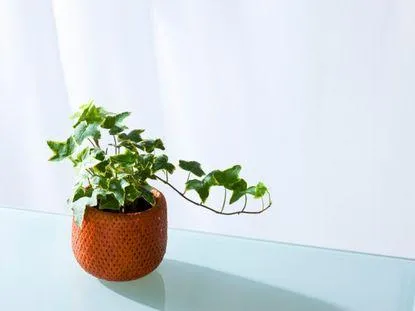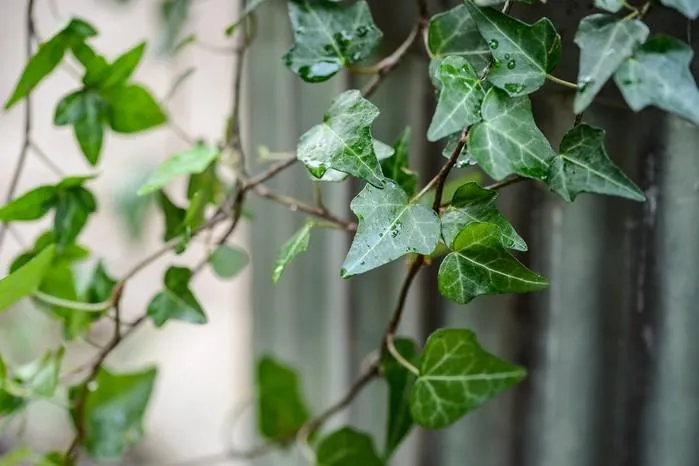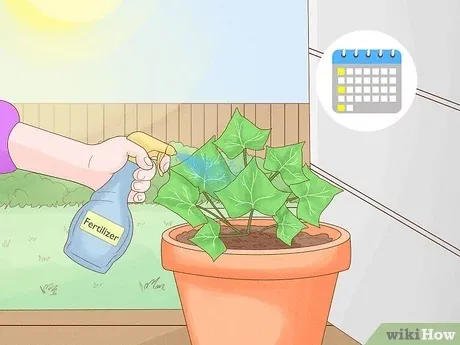A Comprehensive Guide to Caring for Your Ivy Houseplant
Ivy is one of the most popular houseplants due to its attractively variegated foliage and low maintenance needs. However, proper ivy care is required to keep this plant healthy and thriving indoors. In this guide, I will cover all the essentials of ivy plant care so you can provide your ivy with the best environment to grow into a lush beauty.
Understanding Ivy Plant Types
There are several varieties of ivy commonly grown as houseplants. The most popular are English ivy (Hedera helix), Swedish ivy (Plectranthus verticillatus), and Needlepoint ivy (Hedera helix ‘Needlepoint’). English ivy has deep green leaves with creamy white variegation along the edges. Swedish ivy has oval, puckered leaves ranging from dark green to white or yellow variegation. Needlepoint ivy features narrow, pointed leaves with a central dark green vein and cream-colored edges.
Light Requirements
Ivies thrive best in medium to bright indirect sunlight. Direct sun can scorch their leaves. From my experience, an east or west-facing window provides the perfect natural light. If light levels are low, supplement with a grow light. Too little light will lead to leggy growth and sparse foliage over time. Sort of like how humans need sunshine for good health!
Watering Needs
Keep the soil lightly moist but not soggy wet. During growth periods in spring and summer, water whenever the top inch of soil dries out. Cut back watering in fall and winter when your ivy slows growth. Overwatering is a common mistake and can cause root rot. I once made this error and had to repot my whole ivy, so learning the appropriate watering schedule is key!

Humidity Loving Houseplants
Ivies appreciate moderate to high humidity levels around 50-60%. In dry indoor air, their leaves may brown at the edges or tips. To boost humidity, group ivy with other houseplants or use a humidifier nearby. Alternatively, you can place the pot on a pebble tray filled with water so the water evaporates and humidifies the air around the plant. I’ve also found grouping plants together basically helps them all since they collectively raise the humidity in their area.
Soil Preferences
- Ivy prefers a well-draining potting mix that stays moist but dries out between waterings. A soil composed of equal parts potting soil, perlite or vermiculite, and compost works well.
- Repot ivy into a slightly larger pot if its roots begin to circle the bottom of the current container. Use the same potting mix when up-sizing. Overpotting can lead to soggy soil conditions the plant doesn’t like.
- If using a decorative nursery pot without drainage holes, place ivy in an inner plastic pot that can be removed for watering to prevent root rot from poor drainage.
Fertilizing
Feed ivy with a dilute liquid houseplant fertilizer every 2-4 weeks during the spring and summer growing seasons. Ivy grows more vigorously when fertilized, resulting in thicker stems and fuller foliage. In fall and winter reduce feeding to once a month or stop altogether when growth slows. A balanced fertilizer with an N-P-K ratio around 20-20-20 works well. Fertilizer are like vitamins for your ivy!
Pruning and Training
Ivies are superb at clinging and trailing but may need assistance for desirable growth habits. You can train ivy to grow up a support pole or trellis by securing stems gently with twine or plant ties. Prune away leggy stems to encourage bushier growth. In severe cases, prune the plant back by half to promote dense regrowth. But only trim off dead or diseased bits to allow the plant to focus its energy where it’s needed most.
Pest and Disease Problems
Scale, mealybugs, and spider mites can infest ivy. Look for small brown or white spots on leaves or webbing between stems and foliage. Wipe off with cotton swab dipped in rubbing alcohol or use an insecticidal soap spray. Powdery mildew may form on leaves in low humidity or after leaf surfaces remain wet. Increase air circulation and space between plants to prevent recurrence. Rotating ivy to a spot with better air flow and light can help nip potential issues in the bud, before they escalate.

In my experience, preventing pest and disease problems is easier than treating them once they take hold. Practicing good cultural habits like regular wiping of leaves, choosing the right spot, and monitoring for early signs of issues make ivy care much less of a hassle long term. With a little TLC, your ivy can thrive indoors for many years basically chillin’ in its pot!
Winter Care
During fall and winter when days are shorter, reduce watering but don’t allow soil to fully dry out. Cut back on fertilizer. Ivy may drop some lower or older foliage as it goes semi-dormant for winter. This is normal. Move plant to an area with at least four hours of indirect light each day and consistent temperatures around 60-70°F. Check soil moisture weekly and water only when lightly dry. Your ivy will rebound in spring once days lengthen again and it can start soaking up that good ole vitamin D.
Propagation
Ivies are quite easy to propagate from stem or leaf cuttings. Simply remove 4-6″ stems, remove lower leaves, and place stems in water until roots form – this can take a few weeks. Once roots emerge, transplant cuttings to soil. Plant cuttings halfway buried for best results. Leaf cuttings can also be tried by placing ivy leaves vein-side down on moist soil. In spring, you may see baby ivies growing from propagated leaves. It’s amazing how ivy basically multiplies itself when you give it the right conditions!
In conclusion, with the proper growing conditions including bright indirect light, moist well-draining soil, moderate humidity, and occasional pruning or training, ivy makes a carefree, low maintenance houseplant that will keep your home feeling lush and tropical. Questions about ivy care? Feel free to reach out if you need any help – these plants are kind of like family once you’ve bonded with them. Happy growing!

Ivy Houseplant Care Guide
| Watering | Water when the top inch of soil is dry. Ivy prefers moist but not soggy soil. |
|---|---|
| Light | Prefers bright indirect light. Avoid direct sun which can burn leaves. |
| Temperature | Keep above 55°F. Ivy can tolerate lower light if temperatures are cooler. |
| Fertilizer | Feed monthly in spring and summer with a dilute liquid fertilizer. |
| Pruning | Prune as needed to control size and shape. Cut back in early spring to encourage new growth. |
| Repotting | Repot every 2 years in early spring using a pot with drainage holes and new potting mix. |
| Pests | Watch for spider mites which can cause leaf spotting. Rinse leaves with water if spotted. |
FAQ
-
How often do I need to water my ivy plant?
Ivy plants like moist soil but not soggy. Water when the top inch of soil feels dry. Basically, you’ll need to water around once a week, but this can vary depending on light and humidity. Check the soil rather than following a strict schedule.
-
Does ivy need direct sunlight?
Ivy grows well in medium or low light. It can tolerate direct sun for short periods each day, but too much bright light may kind of scorch the leaves. An east or west-facing window provides nice light. On the other hand, low light won’t harm Ivy—it will just grow more slowly.
-
How do I prune an overgrown ivy plant?
To tame an ivy that has become too lush, simply snip off unwanted stems near their base using pruners. You can cut back the plant by about 1/3. Be careful not to trim during hot weather which may possibly shock the plant.Monitor it after pruning and water if the soil becomes dry. The ivy should bounce back with new growth.
-
What kind of soil does ivy need?
Ivy thrives in well-draining potting mix. A soil that retains moisture but dries out between waterings suits these trailing plants. You can use a bought potting soil or make your own by combining compost with perlite or sand for improved drainage. Ivy won’t do well in clay-based or constantly soggy soil.

-
Does ivy pose any health risks?
Most types of ivy are not toxic pets or people. However, some varieties contain small amounts of saponins, which in large doses can trigger nausea or vomiting if eaten. So keep the plant out of reach of young children and pets just to be safe. It appears the risks are quite low for most household ivies with normal contact and care.
-
My ivy is droopy, what’s wrong?
Ivy drops can have several causes. Under-watering is common, so check the soil moisture. Overwatering can likewise droop leaves until the soil dries out. Low humidity may want some occasional misting. Pests or disease are other possibilities—check for signs of bugs or leaf spots. Moving the plant to a shadier spot may perk it up if in too much light. Give it some TLC and the ivy hopefully should rebound.
